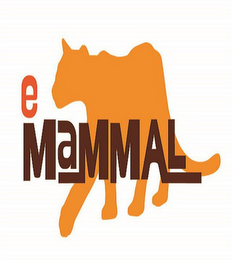Welcome Wildlife to Your Sustainable Yard
Do you try and live a sustainable lifestyle? Do you like to welcome wildlife to your yard? Some of the things that make your lifestyle more sustainable may be benefitting your wildlife neighbors, making your yard more welcoming!
Backyards already have the potential to be great habitat for wildlife, they tend to have a variety of micro-habitat types and an abundance of food, water and shelter. There are some key features that people tend to add to their yards to promote a sustainable lifestyle that also may attract wildlife, for example vegetable gardens, chicken coops, brush piles and compost bins.
Most gardeners are aware of how attractive vegetables are to mammals like rodents, rabbits and deer. But your simple garden full of tomato, pepper and cucumber plants is capable of attracting a lot more than just mammal pests, for example, community gardens throughout New York City attract a variety of bee species.

Eastern cottontail investigating a vegetable garden
Chicken coops are a great addition to a sustainable home, providing a ready source of fresh eggs and fertilizer. They can also attract wildlife! Studies have shown that chicken coops increase the occurrence of eastern gray squirrels and raccoons in yards in the eastern United States. In Brazil, chickens on properties tend to attract oncilla and margay. While this may not be great news for your chickens given the potential for egg theft and predation, well-protected enclosures can help promote a peaceful coexistence.

Oncilla
Composting has gained tremendous popularity over the past few decades as a way to sustainably collect food and yard waste for later use as fertilizer. Because of the predominance of food waste, compost heaps can be quite attractive to wildlife. Studies have shown that coyotes can be detected eight times more frequently at compost heaps compared to other areas of the yard. In suburban areas where prey availability may be low, coyotes and other species could be dependent on the availability of compost heaps to thrive.

White-tailed deer raiding a compost bin
While you may simply place a brush pile in your yard to collect yard waste in one convenient place, brush piles are actually a simple and common habitat management method used to attract wildlife such as rabbits, small mammals, and ground birds. At least 11 state agencies, including North Carolina, and numerous US non-government agencies advise land owners to create brush piles to benefit wildlife. Brush piles provide relief from hot temperatures and refuge from predators for small mammal species.

Eastern gray squirrels making use of a brushpile
While the examples above are ways that sustainable yard features might inadvertently attract wildlife to yards, sometimes attraction of wildlife is the main goal! For example, planting native grasses and trees can attract native bird species. Actively feeding birds not only attracts birds, but mammals as well. Between one-fifth and one-third of households in Europe, North America, and Australia provide supplementary food for wild birds. Likewise, bird baths and other water features provide a supply of clean fresh water for both birds and mammals.

A raccoon takes a drink from a backyard birdbath
Supplemental feeding of mammalian wildlife is also a way to attract them to our yards, however this practice is not recommended for several reasons. Because feeding of wild mammals can affect their social behavior, it increases the potential for disease spread both between wild animals and to humans. Feeding wild animals can also make them less wary of people and more likely to cause problems (like rummaging through trash) which may end up in that animal being euthanized. Keeping wildlife wild is part of maintaining a sustainable, wildlife friendly yard.
Who knew that making your backyard more sustainable for yourself could welcome such diverse wildlife to the area around you! If they could, the wildlife would thank you!
Contributed by Austin Mueller


